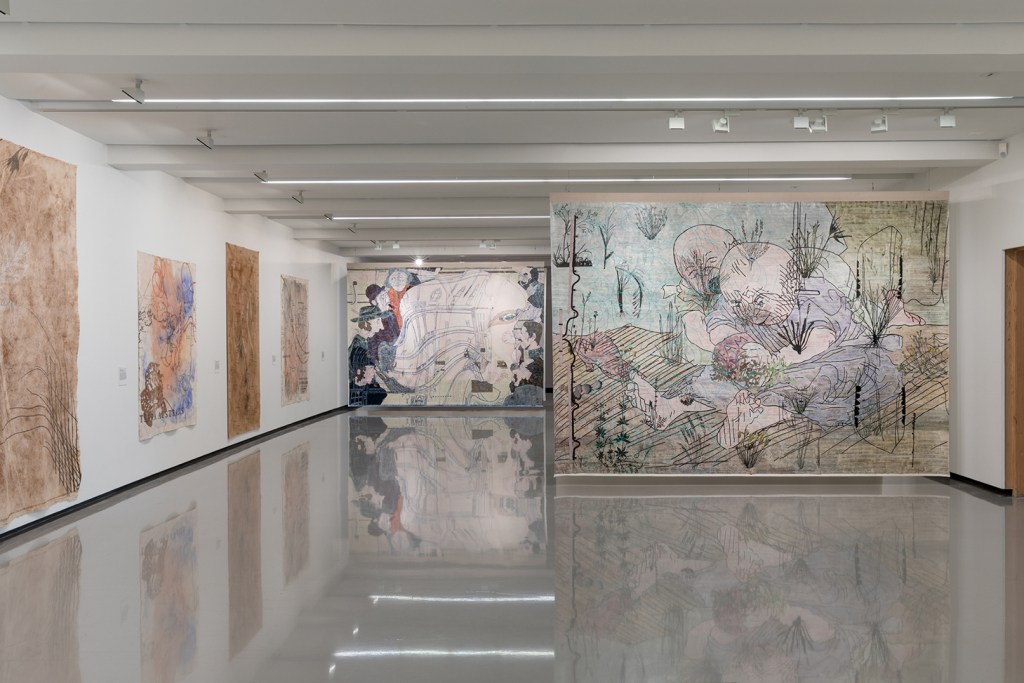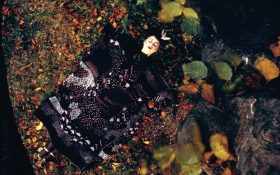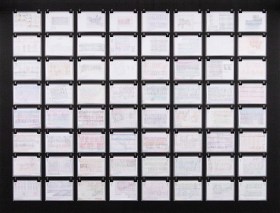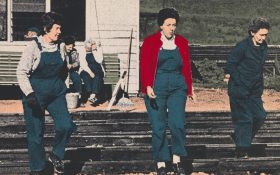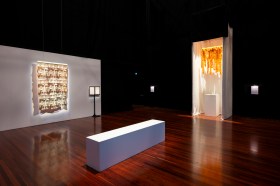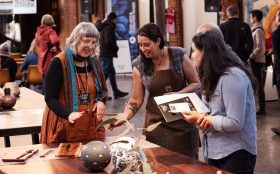It started out as a conversation between two artists; second-generation immigrant artist Helen Johnson based on Wurundjeri land, Melbourne, and Waanyi artist Judy Watson in Meanjin, Brisbane.
Through discussion back and forth, the red threads of history, loose ends began to take shape, often via zoom due to COVID restrictions, adding another layer and complexity, perhaps richness to the outcome of their visual dialogue.
Originally commissioned as part of The Balnaves Contemporary Series and Know My Name program for the National Gallery of Australia (NGA), this exhibition is now showing in an extended form at Monash University Museum of Art, MUMA Caufield campus, Melbourne.
The Gallery spaces are large and minimal, allowing visitors to move freely from one area to another. Nicely surfaced concrete floors absorb noise and the exposed framework of the spaces inner structure down-plays the importance of the galleries themselves, redirecting the focus to the artworks at hand and amplifying the dialogue between the two artists.
Working across the mediums of paint, print, installation and video, many connecting points are explored, allowing the conversation to flow. Both artists like to work large, often on unstretched surfaces. Both draw from archival resources and develop their image and mark-making through layering of imagery, medium and technique to explore the experience of colonisation and its legacy on Country and climate, as well as the role of women in an historical and contemporary context, motherhood and the importance of family.
The lens of cultural difference, understanding and application challenges the visitor to view the conversation from various perspectives.
These threads of connection and disconnection weave their way through the exhibition. The textural layering of line work forms threads of recognition in Johnson’s large painting Becoming what you always were (2019), synthetic polymer paint and pencil on canvas.
On viewing, the figure of a sitting mother nursing her baby emerges from the layers of linework beneath, and speaks of history, family; a metamorphosis to a new and changed state.
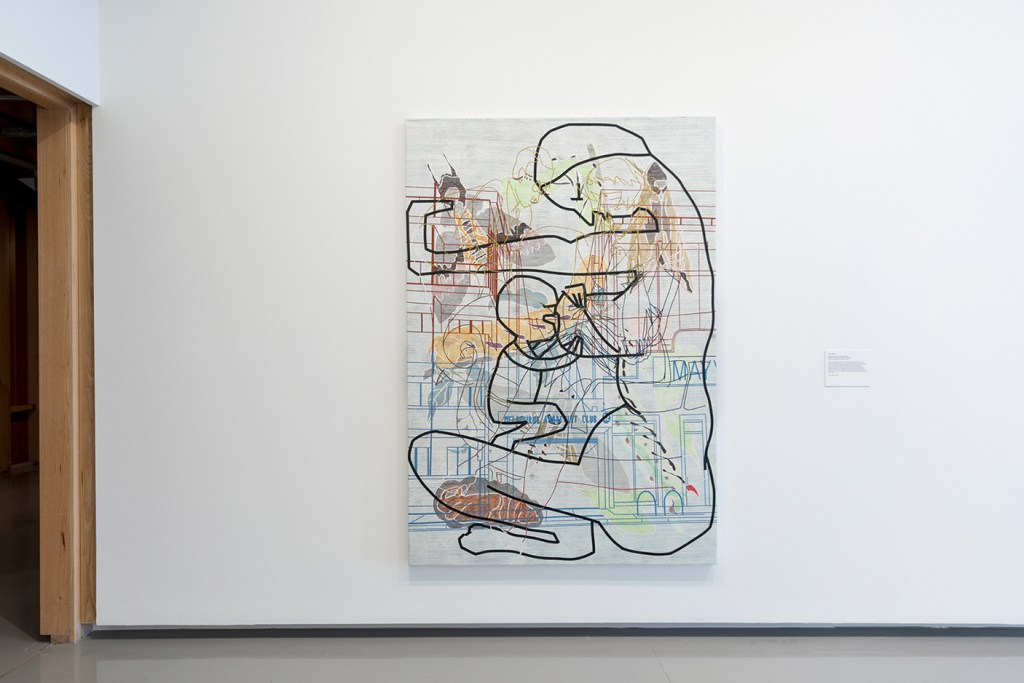
Placed near the entrance of the exhibition it is suggestive of a beginning and connects, in a cyclical fashion, to Watson’s Fruit and seeds 1- 3, (2000), etchings with chine collé, close to the end of the show.
Heavily pregnant when she made these works, they reference universal forms that produce the seeds of life and new beginnings.
Dancing across the walls are Watson’s Cotton tree string (kunda walkurrji), 2021 – 22, made from the fibre of cotton trees, some hanging loosely while others form tight knots. The fibre was traditionally used for fishing lines, nets, bags, adornment, weaponry and games and symbolises the thread of survival for a community and a connecting thread that brings people together as a group to learn, share skills and chat; the thread as umbilical cord of the clan is what allows it to survive.
The focus on the power of community can also be seen in Watson’s installation piece Veil of tears, (2021 – 22) in which she invited family and friends to sew and paint calico. Referencing the wounds of colonisation, muslin veils hang in front of the names of 51 Aboriginal people who died in police custody.
The work speaks not only of injustice but of healing as the red thread of the wounds also represents the sewing and repairing of past traumas.
The threads of colonial exploration continue in Johnson’s Foundation 2021 – 22, synthetic polymer paint and pencil on unstretched canvas. Drawing from archival material, the artist uses symbolism of the feminine to depict the newly Federated Australia; a young white woman seeking guidance from the older patriarch such as politician Henry Parks.
At the bottom of this work sit cartoon-like depictions of four men, from the first parliament of Australia, representing the country’s shoddy colonial foundations. The voice and imagery of this painting takes time to emerge from the heavily textured and layered surface but perhaps ultimately more successful than some of the more politically didactic pieces.
Evading police, Rosie hid behind a wind break. Then slipping silently under water waited, breathing through water reeds until her pursuers were gone. This is how Watson’s great-great-grandmother survived a massacre; with the artist commemorating the event in her work Carpentaria petition 1903, signatories, kangaroo grass, feather, cabbage tree palm (2021).
A white cockatoo feather floats across the surface, symbolising both Country but also the writing quill of her ancestor’s colonial aggressors in their complaint about the Indigenous people of the area. Waving kangaroo grass at the top of the painting and woven cabbage tree palm in the bottom right are also symbolic of place and the fragile existence of these people.
Layers of history and culture are exposed through the gently rubbed volcanic soil on the canvas surface, combined with synthetic polymer paint graphite and waxed linen thread. Supporting the work is a copy of the 1903 document that inspired the piece.
Read: Theatre Review: Dreams of a Lonely Planet
This is a mindfully curated show supported by didactic panel and accompanying expanded text labels to provide greater context to the red threats and loose ends that wind their way through the artworks.
A free poster with information about the artists and the exhibition is also available for the visitor to take away with them.
Helen Johnson and Judy Watson: the red thread of history loose ends
Monash University Museum of Art, Melbourne
Free entry
The red thread of history, loose ends will be exhibited until 12 November 2022.
